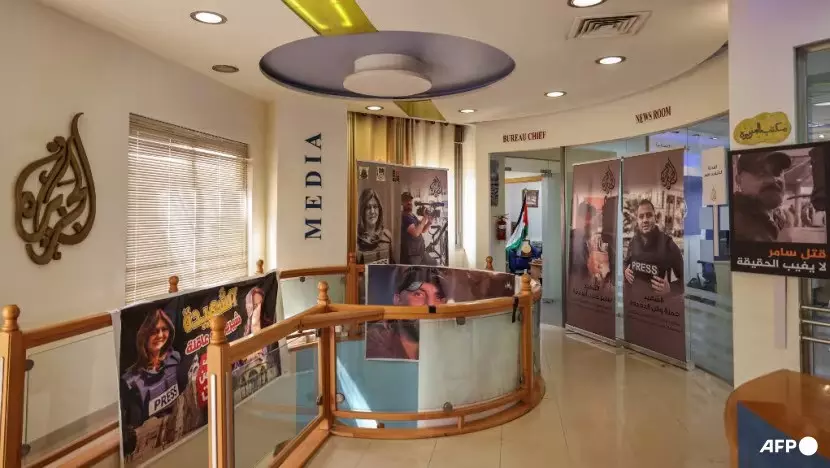Nobody goes to a museum any more just to look at the exhibits – well, not if they’re aged under 40. They want to ‘experience’ them, become immersed in their story, preferably in a way that is personalised to them. Just ask anyone who sells to the museums and heritage sector.
“We’ve found that, while simple forms of playback to tell the story of a museum are still needed and valued, there’s more emphasis now on making these attractions a real experience,” says Jon Hamley, senior technical sales engineer at 7thSense. “That means taking simple playback and transforming it into something where the guest gets to create their own story.” “Museums are incorporating high-resolution screens, interactive displays, VR experiences, immersive environments, video mapping and surround sound – transforming communication from a single, one-way channel to omnidirectional and interactive,” says Blanca Munoz, business development manager for museums and experiential projects at AVI SPL.

“Visitors become part of the experience, and today, anything that creates an experience or emotion is something people want to share on social media. Besides aiding interaction and understanding, these advances have also helped attract a demographic that was previously less interested in museums - teenagers.” Peerless-AV mounts support living surface display installations in Vertigo Systems’ Cologne showroom.
The ‘interactive ocean’ which recognises movement and touch, allows the viewer to interact with sea creatures in the reef through a photorealistic realtime simulation. Hands-on experiences Hands-on experiences are key to engaging visitors and aiding learning and understanding, according to David Thompson, lead market analyst at Futuresource Consulting. “Interactive LCD panels and LED video walls are engaging and memorable, and LCD tabletop screens are particularly suitable for younger visitors.
Beyond wayfinding, interactive displays enable visitors to peruse a historical timeline and explore areas of particular interest by zooming in for more details.” “Interactive ‘living surface’ installations are emerging, that can transform floors, tables, walls and other surfaces into interactive areas,” says Tom Fenton, EMEA director of technical and product development at Peerless-AV. “The core of the system comprises software, a graphic PC, and infrared-image sensor technology.
The image can be produced using projectors, LED or LCD displays, LED grids or stackable POS display cubes.” Contacta Systems: National Trust shop counter hearing loops A demonstration installation at Vertigo Systems’ showroom in Cologne features a 75in wall-mounted display that recognises movement and touch, allowing viewers to interact with sea creatures on an ocean reef through a photorealistic realtime simulation, as if exploring as a scuba diver. As the day progresses, the fish population and light levels change according to the position of the sun.
It can help if the interactive milieu is familiar to the user, particularly the young. At the Historic Silver Mine in Tarnowskie Góry, Poland, an educational exhibit on caring for the environment is presented by two animated characters, Karlik and Gwarek, based on the popular kids’ game Minecraft, explains Adam Olszar, CEO of InfoLogic Clevertouch Poland, which supplied the museum’s large format displays and signage players. Interactivity is not just for individual visitors.
“Content playback throughout the Historic Silver Mine Museum is controlled from a mobile iPad,” says Olszar. “So a tour guide can lead their group through the museum taking whatever route they like, and display appropriate content at each point. This changes the thinking about digital signage, from looped materials displayed over and over from morning to evening, to a specific person – in this case the tour guide – easily controlling the content and running it on demand.
” An AV Stumpfl PIXERA mini Dual media server delivers projection-mapped visuals for Golden Eye on the Cosmos, James Webb Space Telescope at the Hong Kong Space Museum. ‘Hands on’ feel Kineics can provide an even more ‘hands on’ feel. “For example, the Adirondack Museum in upstate New York offers an experience where visitors use sticks to ‘push’ logs down a river,” says Tony Torres, integrations engineer at ZeeVee.
“An Xbox Kinect reads the ground below the projector to see where visitors are pushing the logs, to provide accurate feedback to the experience.” Sometimes the visitor gets into the heart of the action. “At WWE Experience Saudi (in Riyadh), after making your way through exhibits of wrestling history, you can take part in an escape room or even ‘become a superstar wrestler’,” says Hamley.
“This provides a unique experience for each guest, adding a little ‘extra’ to the traditional museum experience.” AI can also help to personalise the visitor experience. “It can be used to personally curate exhibit content dynamically depending on the audience – whether that’s elementary school children, university students or older adults,” says Thompson.
“Facial expressions, from fascination to boredom, can provide cues to tailor content to maintain high engagement. And language recognition allows the customisation of written text and audio. Insights from the resulting statistics can then be used in developing future exhibits.
” AV can play a crucial role in expanding the impact of museums and heritage attractions beyond their own four walls. “Through virtual tours and digital exhibitions, AV enables global access to collections and artefacts, offering immersive experiences to audiences worldwide,” says Lorenzo De Poi, brand manager at K-array. “Live-streamed events, educational programmes and digitised archives further enhance engagement by providing realtime interaction and access to historical resources online.
” “Some LED brands have begun to exhibit LED panels that mimic the textures of oil-based paintings with impressive realism,” adds Thompson. “This would enable museums and galleries to transit priceless works of art to broader audiences without the risk of loss or damage to the original.” The Van Gogh Art Lighting Experience in Vietnam for First ITC.
An exhibition that employs 70 projectors, 25 calibration cameras kits, and nine Anystation Media servers, using VIOSO 6 technology. Add ambient audio Engaging experiences do not have to cost the earth. “Take a small town museum, with nothing but artefacts with little placards showing static text – then just add the simplest AV enhancement, ambient audio,” says Torres.
“Now, instead of just reading about this log cabin and how pioneers lived, the audio track of creaking wood, wagon wheels and people conversing brings the experience up a notch. By adding one digital signage player and a monitor (maybe another $1,000 investment) an exhibit can play a looping video showing a re-enactment of the Oregon Trail. That’s even more engaging.
” For more elaborate, interactive installations, however, cutting edge technology does not always come cheap – a major issue for a sector heavily reliant on public funding, grants and donations. This can make for a rather different business model. “Museums tend to have big budgets when it’s time to buy, but that’s a one-and-done budget,” says Torres.
“They don’t have room for change orders or scope-of-work creep, and the integrators that cater to museums understand this. Where commercial entities have more leeway for costs added during installation, museums and heritage attractions need system designs that will meet their needs – without upcharges – at the outset. And if the HVAC installer puts its system where you needed to put your projector, you’re going to have to figure it out for no more than your original quote.
” Multiple Clevertouch interactive displays in unison at Historic Silver Mine, Poland ©Łukasz Kornafel ‘Buy once and buy the best’ The philosophy, certainly among top-flight institutions, seems to be ‘buy once and buy the best’. “AV budgets for museums and heritage attractions can exceed the million-dollar mark,” says Torres. “However, it’s not a fast repeat business, because they’re going to have five, eight or ten-year refresh cycles.
And because they understand that they have to live with what they buy for up to a decade, they buy not only high-end and high-grade equipment, but the latest high-end and high-grade equipment. “For example, the Smithsonian museums in Washington, DC are on the bleeding edge of technology, and very conscientious about future proofing. They might install fibre cable knowing they don’t need fibre now, but in five to ten years when they do a tech refresh, fibre will likely be what all AV installers are using.
” Museums and heritage is not the easiest market to sell to. “It’s becoming increasingly specialised, and not everyone meets the requirements to participate in certain projects,” says Munoz. “Specialised personnel are needed, and public bids are often lengthy, involving significant financial and time commitments that not all companies can handle.
One of the most challenging aspects with some clients is translating their ideas into something feasible. Sometimes there’s a belief that technology can achieve everything, but there are limits.” K-array: The Media Museum of Sound and Vision in Hilversum in the Netherlands, is an immersive experience exploring modern media.
There can be physical challenges, too. “Each heritage building is a unique environment,” says Avril Mayes, account manager at Contacta Systems. “The property might be listed, it could have solid stone walls or features that can’t be disturbed.
Our engineers get very creative – laying cabling in the under-floor ventilation channels of a historic church, for example, and getting into a three feet high crawl space beneath it so there’s no visual impact – because not only do venues not want unique features being physically altered, there’s also a need to be sensitive to the appearance of the space. Acoustics can also be challenging if there are very high ceilings or little to absorb the sound.” Nor should the AV become the main event.
“It’s crucial to balance technology with the preservation of historical authenticity,” says Paul Cales, CEO of Naostage. “Overuse of AV can overwhelm visitors and detract from the exhibits themselves. Successful implementations blend technology seamlessly into the environment, enhancing the narrative without overshadowing it.
” It is all worth the effort, though. “Challenges aside, museums and heritage attractions are often multifaceted AV projects that come with prestige and pride in knowing that millions of people each year will see your handiwork,” says Torres. “They’re rewarding for AV engineers because they depend on singular, experiential AV elements, they’re not copy-and-paste projects.
While the customer dictates seventy per cent of the solution, the integrator gets the opportunity to bring in custom elements the end user didn’t know were possible. That’s the fun part.”.



















